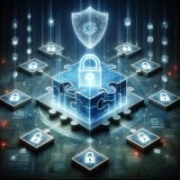Symantec Endpoint Security is a robust and reliable product that provides complete protection against viruses, malware, Trojans, and malicious files. It offers application and device control, ease of use in deploying and updating, a central control console, stability, scalability, auto-discovery capabilities, patch management, endpoint detection and response capabilities, intrusion detection module.



| Product | Market Share (%) |
|---|---|
| Symantec Endpoint Security | 3.5% |
| Microsoft Defender for Endpoint | 9.5% |
| CrowdStrike Falcon | 7.8% |
| Other | 79.2% |
| Type | Title | Date | |
|---|---|---|---|
| Category | Endpoint Protection Platform (EPP) | Nov 5, 2025 | Download |
| Product | Reviews, tips, and advice from real users | Nov 5, 2025 | Download |
| Comparison | Symantec Endpoint Security vs CrowdStrike Falcon | Nov 5, 2025 | Download |
| Comparison | Symantec Endpoint Security vs Microsoft Defender for Endpoint | Nov 5, 2025 | Download |
| Comparison | Symantec Endpoint Security vs SentinelOne Singularity Complete | Nov 5, 2025 | Download |
| Title | Rating | Mindshare | Recommending | |
|---|---|---|---|---|
| CrowdStrike Falcon | 4.3 | 7.8% | 97% | 135 interviewsAdd to research |
| Microsoft Defender for Endpoint | 4.1 | 9.5% | 94% | 198 interviewsAdd to research |
| Company Size | Count |
|---|---|
| Small Business | 53 |
| Midsize Enterprise | 25 |
| Large Enterprise | 48 |
| Company Size | Count |
|---|---|
| Small Business | 483 |
| Midsize Enterprise | 247 |
| Large Enterprise | 642 |
The Symantec Global Intelligence Network (GIN) provides threat intelligence and detection across endpoints, email, and web traffic. It has helped organizations reduce downtime, increase productivity, and improve security posture. Symantec Endpoint Security is easy to use, has a flexible administration, and offers more value than expected.
Symantec Endpoint Security was previously known as Symantec EPP, Symantec Endpoint Protection (SEP).
Audio Visual Dynamics, Red Deer Advocate, Asia Pacific Telecom Co. Ltd., Kibbutz Ein Gedi, and AMETEK, Inc.
| Author info | Rating | Review Summary |
|---|---|---|
| Senior Security Delivery Analyst at Accenture | 3.5 | I've found Symantec Endpoint Security easy to manage and effective for policy tasks, but its support process is complex, and it's less robust than alternatives like CrowdStrike, especially when handling bulk alerts and security capabilities. |
| Head of Information System at EEC | 4.5 | I use Symantec Endpoint Security to protect my company's email and systems from threats, valuing its threat identification and incident response features. While the solution is financially satisfying, I seek improvements in scanning efficiency and speed for optimal performance. |
| OT Technologist at a energy/utilities company with 201-500 employees | 2.0 | I use Symantec Endpoint Security for endpoint protection and as a host-based firewall with our 150 endpoints. Its ability to remotely isolate compromised computers is valuable, although the user interface is cumbersome. It provides essential efficiencies and security improvements over Trellix. |
| System Administrator at Aljazera Market co | 4.0 | I use Symantec Endpoint Security for its detection and response capabilities, like scanning and application control. It offers valuable features, but needs improvement in scanning and malicious file detection. Due to these issues, I'm considering switching platforms. |
| Cyber Security Pre-Sales at SoftwareONE | 3.5 | I use Symantec Endpoint Security primarily for small on-premises networks in Germany, valuing its EDR functionality due to legal needs. While it's cost-effective for endpoint and mobile defense, I find licensing visibility could be improved. |
| Senior Manager Network Design at MEEZA, Managed IT Services Provider | 4.5 | We use Symantec Endpoint Security for end-user laptop protection due to its centralized management and easy deployment. While it delivers good ROI with alert-based management, it could improve initial deployment training resources to enhance user experience. |
| Security Engineer at a computer software company with 201-500 employees | 4.0 | Symantec Endpoint Security offers a powerful application control feature that checks host integrity and quarantines non-compliant items. However, users often experience system slowdowns during scans and report issues with heavy agents and false positives with legitimate applications. |
| CEO at RISE Technologies | 5.0 | No summary available |